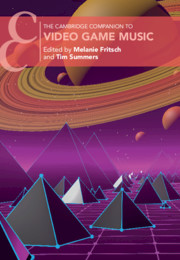Book contents
- The Cambridge Companion to Video Game Music
- Cambridge Companions to Music
- The Cambridge Companion to Video Game Music
- Copyright page
- Contents
- Figures
- Tables
- Musical Examples
- Contributors
- Preface
- A Landmark Timeline of Video Game Music
- Foreword: The Collaborative Art of Game Music
- Introduction
- Part I Chiptunes
- Part II Creating and Programming Game Music
- Part III Analytical Approaches to Video Game Music
- Part IV Realities, Perception and Psychology
- Part V Game Music, Contexts and Identities
- Part VI Beyond the Game
- 24 Producing Game Music Concerts
- Select Bibliography
- Index
- References
Part IV - Realities, Perception and Psychology
Introduction
Published online by Cambridge University Press: 15 April 2021
- The Cambridge Companion to Video Game Music
- Cambridge Companions to Music
- The Cambridge Companion to Video Game Music
- Copyright page
- Contents
- Figures
- Tables
- Musical Examples
- Contributors
- Preface
- A Landmark Timeline of Video Game Music
- Foreword: The Collaborative Art of Game Music
- Introduction
- Part I Chiptunes
- Part II Creating and Programming Game Music
- Part III Analytical Approaches to Video Game Music
- Part IV Realities, Perception and Psychology
- Part V Game Music, Contexts and Identities
- Part VI Beyond the Game
- 24 Producing Game Music Concerts
- Select Bibliography
- Index
- References
Summary
Games present us with virtual spaces and universes, and ask us to interact with them. These worlds are virtual, because they cannot be sensed directly like our everyday reality, but instead, we perceive them through the channels of audio, video and, sometimes, touch, that the game apparatus provides. Audio and music are part of how we come to understand the game environments that are shown to us – sound helps to construct the worlds and shapes how we engage with them.
- Type
- Chapter
- Information
- The Cambridge Companion to Video Game Music , pp. 263 - 318Publisher: Cambridge University PressPrint publication year: 2021



